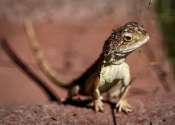Finding new chemistry to capture double the carbon
Finding ways to capture, store, and use carbon dioxide (CO2) remains an urgent global problem. As temperatures continue to rise, keeping CO2 from entering the atmosphere can help limit warming where carbon-based fuels are ...









